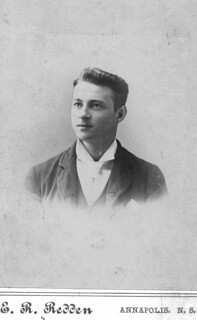
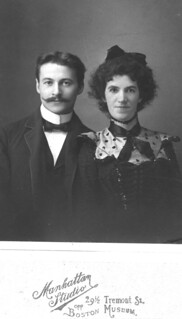


When we explore sets of photos we could do worse than trying to attend to the inner voices of comment and allusion --they represent our efforts to DECODE the evidence of our eyes, to fit what we see into some sort of context, to CONSTRUCT stories that reconcile the unknowns of the images. Sometimes the stories are bodacious fictions or questionably-warranted extrapolations from the objective data, but even our most derisive calumnies are unlikely to harm the subjects in a 60-year old photo of an anonymous forefather.
Many elements of old photos can seem risible, from lemon-sucking expressions to uplifting corsetry to unfortunate hair treatments and overweening millinery.
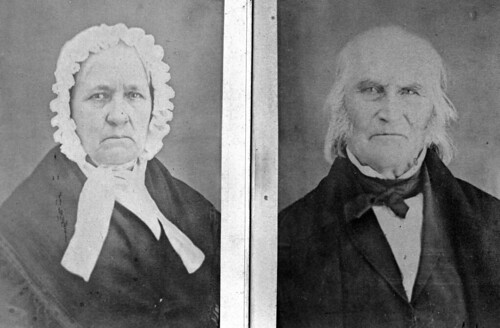
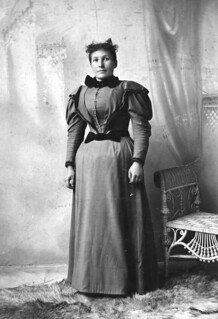
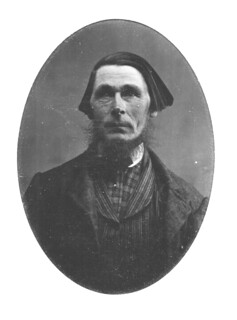
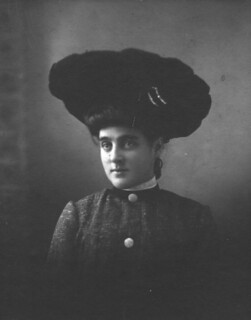
In some photographs it seems that the personalities of the sitters beam through the camera lens and are burned into the film. A session with such refulgent characters may tell us more about ourselves and our own propensities than about those of the sitters, and thus can serve to underline the point that photographs can be projective devces in both directions. My 21st century reading of psychic torment or bottomless fecklessness or censorious judgement testifies that I have constructed those character assessments out of my observations of the living, but we've all had the experience of being shown photographs of ourselves that reveal the inner gibberer, the still-resident adolescent, the nascent axe-murderer, or the hideously-unpromising infant.
Here are a few examples of readings:
Zephyr
A snapshot is an instant, and Preserves the Moment for posterity. Here we have two women in fancy dresses, standing in a dusting of snow:The wind came along just as the shutter was pressed, and the satin is forever caught in flight. My reading of this is that the day is Easter Sunday, the Family has gathered for Easter Sunday Dinner, and pictures had to be taken.
Hollyhocks
Another side of the snapshot as a medium is the composition, which often privileges the person over the object, as in this enigma:There's the further curiosity of the man in the window, behind the woman's left shoulder.
The Cornboil
The Corn Boil is a Nova Scotia institution, an event that can only take place during about 3 or 4 weeks of every year. This picture is an epitome of the event (held in a "cottage", as indicated by the stud-wall construction and by the array of things hanging between the studs), but with a heterogeneous cast of participants.The snapshot is from a collection from Kingston, in the middle of the Annapolis Valley, which was the nearest town to RCAF Station Greenwood, a training center for the Royal Air Force Bomber Command (see Commonwealth Air Training Program).
The details are delicious. Consider these:
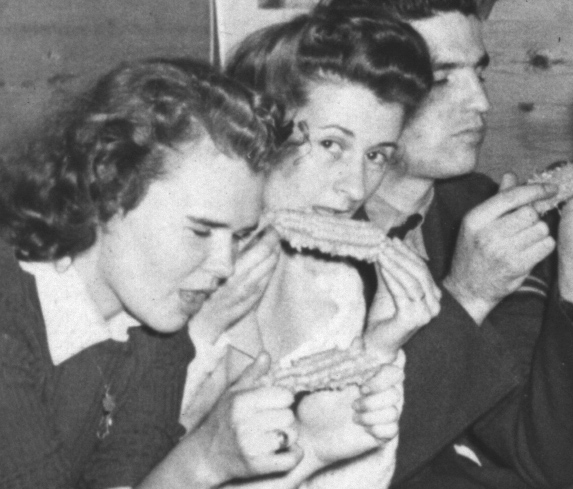
The two women are Nova Scotians who know how to eat corn. The man in the picture on the right has clearly never eaten corn before --other evidence from the collection of photographs tells me that he is Jackie Smee, one of the RAF trainees. Another detail captures a Brit about to take his first bite:
The calendar on the wall is for October 1942, but I suspect that this picture was taken in September 1943 (corn is simply not available in Nova Scotia in October). There's a picture of King George VI with Queen Elizabeth (the Queen Mum) and Winston Churchill. And this detail of shoes is a whole story in itself:
Some present less elaborate readings, and are experienced as punchlines instead of whole stories. Here are two that belong in a Moments Preserved series:

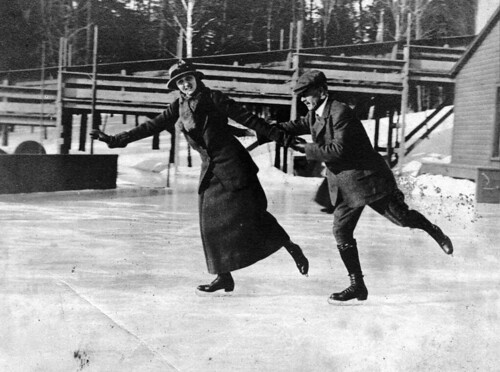
The skaters are gliding forever, in a sort of perfection that one hopes for (did they both fall 10 seconds later?) and the shot is perfectly framed to capture their vector on the ice.